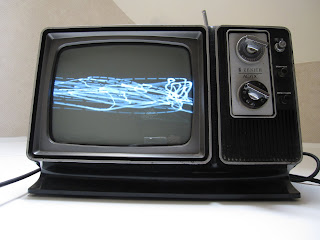"War, Love and Peace" was made using the shell of an old RCA radio. Using a web application (Processing) and an Arduino micro-controller, I was able to create a sort of online hit counter. The computer goes online to a specific website - I used
http://thelede.blogs.nytimes.com/ - and counts how many times the words
war,
love, and
peace appear. It returns the result to the web application. The application translates the data to the micro-controller. The micro-controller displays the value on the analog gauges and the red LED. The large gauge is for "war," the small gauge is for "peace," and the red LED is for "love." There is also an LCD screen that displays the words "war," "love," and "peace" every time it receives it. The program updates every ten seconds. If the
New York Times blog posts something new, the machine will also update. Mechanically, what once controlled the tone of the radio now controls the contrast of the LCD screen. What controlled the volume now turns the hands of the clock backwards and brightens the large lightbulb. This project was inspired by the last chapter in Massimo Banzi's book,
Getting started with Arduino. I chose to make this piece interact with the
New York Times blog page, because it is one of the most current world news sources on the web. I tried the project with several major news sites, in fact, and concluded that
war is consistenly the most common word in news out of "war," "love," and "peace."


















































